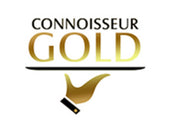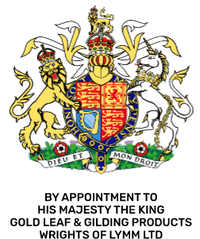Edible Gold Leaf Across the World - Morocco
- by sam@wrightsoflymm.co.uk User
Morocco, a country known for its vibrant culture, intricate artistry, and rich culinary traditions, has long embraced the opulence of edible metals—particularly gold leaf and silver leaf. These decorative materials have been used for centuries to adorn both food and ceremonial items, showcasing status, celebration, and artistry. Whether it’s 24 carat goldleaf, 23 carat gold flakes, silver flakes, or shimmering gold dust, Morocco has found unique and meaningful ways to incorporate these luxurious elements.
What is Edible Gold Leaf?
Goldleaf refers to thin sheets of gold that are safe for human consumption. Typically made from 24 carat or 23 carat pure gold, it is tasteless, odourless, and non-toxic. In Morocco, it’s also common to find silver leaf, gold flakes, silver flakes, gold dust, and silver dust, used for both culinary and decorative purposes.
Terms Used for Gold Leaf in Morocco
In Morocco, the local terminology for gold and silver embellishments varies slightly depending on region and dialect. Common terms include:
-
ذهب صالح للأكل (Dhahab Salih li al-Akl) – “Edible Gold”
-
ورق الذهب (Waraq al-Dhahab) – “Gold Leaf”
-
نقطة ذهبية (Nuqtah Dhahabiya) – “Gold Flake”
-
تراب الذهب (Turab al-Dhahab) – “Gold Dust”
-
ورق الفضة (Waraq al-Fidda) – “Silver Leaf”
-
غبار الفضة (Ghubar al-Fidda) – “Silver Dust”
These terms are often used in traditional markets (souks) and among artisans and chefs who incorporate goldleaf into various applications.
Historical Background
The use of edible gold and silver in Morocco can be traced back to the Almohad dynasty (12th century), when opulent banquets and royal feasts were commonly adorned with gold dust and silver leaf to reflect the wealth and divine favour of rulers. Influences from Andalusian Spain, the Ottoman Empire, and Islamic Persia also played a role in embedding luxury aesthetics into Moroccan food culture.
Islamic scholars historically debated the permissibility of consuming gold and silver, but many Moroccan scholars permitted their use in celebratory settings, especially in tiny, decorative quantities. This made goldleaf especially popular for weddings, religious holidays, and royal events.
Traditional Uses in Moroccan Culture
1. Culinary Presentations
In Moroccan gastronomy, edible gold flakes and silver flakes are used to decorate:
-
Almond and honey pastries like Ghriba and Briouat
-
High-end couscous and Mechoui (roast lamb)
-
Saffron-infused desserts and baklava
Fine dining restaurants in Marrakech, Casablanca, and Fes often serve luxury dishes adorned with 24 carat gold leaf or gold dust to appeal to elite clientele and tourists seeking exclusive culinary experiences.
2. Ceremonial Events
23 carat goldleaf and silver leaf are traditionally used during:
-
Weddings – Adorning sweets and trays with gold dust
-
Eid Celebrations – Enhancing the visual appeal of desserts
-
Birth Celebrations (Sbooa) – Decorating confections and baby gifts
3. Cosmetics and Skincare
Moroccan beauty rituals sometimes incorporate gold dust and silver dust for their supposed rejuvenating properties. Face masks and creams may include micro-particles of goldleaf, tying modern beauty with ancient tradition.
Modern Revival and Global Appeal
In recent years, Morocco has seen a resurgence of interest in goldleaf, especially within the realms of tourism, gastronomy, and luxury branding. Chefs, artisans, and cosmetics manufacturers are embracing 24 carat gold leaf and silver flakes not only for their visual allure but also as a symbol of authenticity and cultural richness.
This trend aligns with global interests in edible metals—especially in luxury markets across Dubai, Europe, and North America, where Moroccan goldleaf products are often exported.
Final Thoughts
Morocco’s use of edible gold leaf, from 24 carat gold dust to delicate silver flakes, reflects a deep cultural tradition that blends luxury, art, and celebration. Whether you're savouring a gold-adorned pastry in Marrakech or gifting a goldleaf-wrapped sweet for a Moroccan wedding, this glittering tradition continues to shine through centuries.






